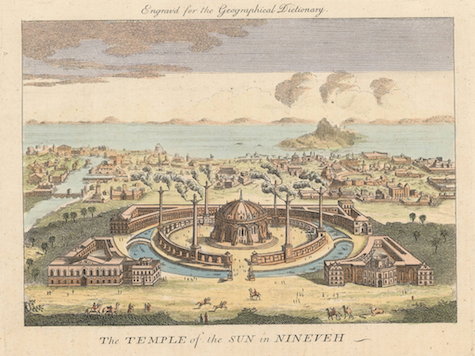The sale of archaeological treasures from the Biblical city of Nineveh and the surrounding territory is becoming one of the main sources of funding of the Islamic State in Kurdistan as well as in Syria, according to reports by the Italian newspaper Corriere della Sera.
A USB stick recovered from an Islamic State militant by Iraqi intelligence in August documents the value of revenues on the black market at $32 million. Among the items for sale: hundreds of headstones, inscriptions, mosaics, and adornments.
According to Qais Hussein Rasheed, head of the state-run Museums DepartmentIn Iraq, black market dealers are entering areas under Islamic State control to buy these items.
In their zeal to destroy what they consider to be heresy, Islamic State militants have demolished many artifacts but they are cashing in at the same time, extracting valuable relics to sell on the international black market.
Profiting from religious artifacts represents a curious double game. On the one hand, the precepts of Wahhabism, a fundamentalist Islamic sect, require the destruction of every object of worship not directed to Allah. This has justified the demolition of churches, mosques, and tombs, and has been carried out with maximum media exposure.
On the other hand–this time without advertising it–the same IS leaders are now either selling artifacts directly or granting access to occupied archeological zones to teams of professional looters. They then split the revenues from the plunder according to the Islamic law of Khums: a fifth of the spoils must be paid to God, ie, the Islamic state.
The Turkish border is only a few hours away with Western brokers waiting to transfer the artifacts to the major black art markets: London, New York, and Tokyo.
Mosul and the surrounding Nineveh plain, taken by ISIS in June, are home to some 1,800 of Iraq’s 12,000 registered archeological sites.
Some fear that other sites, such as Mosul’s city museum, could also face demolition. Rasheed has said that IS militants expelled antiquities officials the museum, censuring them for protecting “idols.”
Daniele Morandi Bonacossi, director of the University of Udine’s archaeological mission in Assyria, was among the last scholars to be able to see the relief sculpture at the royal palace of Nimrud, most likely ripped off with strokes from a pickaxe, and the stone portrait of the monarch Tiglath-Pileser III, literally broken to bits by marauders hunting for a (non-existent) treasure chest of gold that they thought was hidden there.
In Iraq and Syria, officials warn that ISIS is destroying much of the region’s millennial cultural history, which can never be regained.

COMMENTS
Please let us know if you're having issues with commenting.